Toronto residents are a lucky bunch for a number of reasons but up there near the top are the beaches.
There are plenty to choose from – not least a district called The Beaches – but we opted to visit the Toronto Islands, which lurk just offshore in Lake Ontario and offer plenty of cycle routes as well as memorable views of the city skyline.
In the sunshine we walked down to the Jack Layton Ferry Terminal at the foot of Bay Street, dodging the horrific slipways of the Gardiner Expressway, which is undoubtedly the biggest and ugliest scar on the face of the city and a ghastly symbol of Toronto’s submission to the wretched car. A few yards on and with cycles hired from one of the city’s bike share stops, we could leave the horrors of the motorway behind and enjoy the views across the water instead.
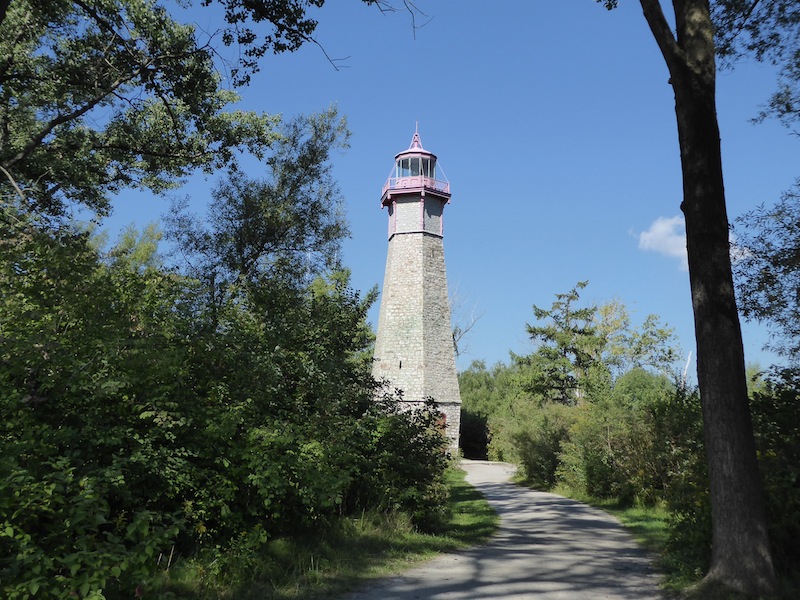
The Toronto Islands are a sandy, low-lying, wooded chain, formed over time by currents generated in part by the Niagara River. They were originally a sand spit and only separated from the mainland following a series of storms in the 1850s.
A busy car ferry carried us on the short hop to the west of the chain and a stop called Hanlan’s Point, named after one of the families that settled in the area back in the 1800s. It’s now very much dominated by Billy Bishop City Airport, and Bombardier Dash 8s of Porter Airlines swept low over us as they came into land, the hum of their prop engines sounding like a million bees on heat. As something of a plane spotter, I was like a pig in shit as the giant glass and concrete towers of Toronto’s Downtown receded.
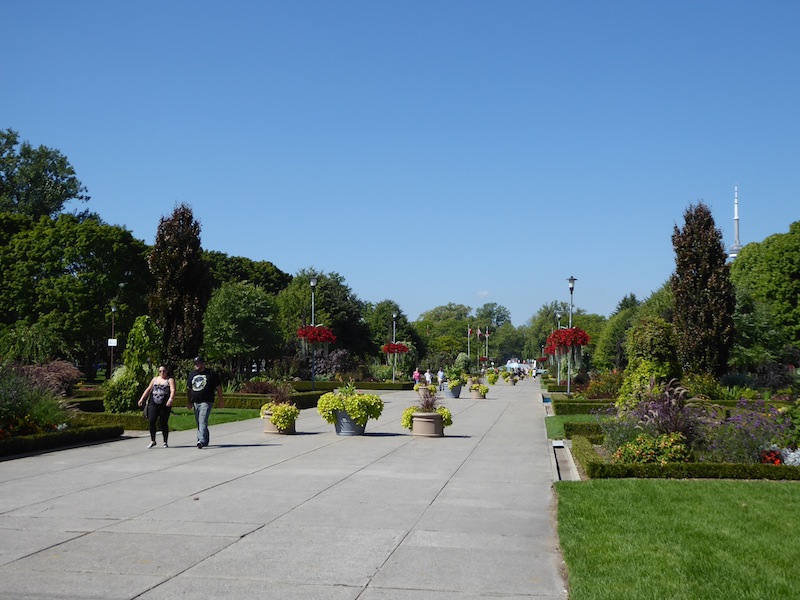
Our aim was to tour the islands by bike, find lunch (something that hotel staff and our guide books said wouldn’t be easy) and then stop for an hour or two of relaxation at one of the beaches. Once away from the little dock and the airport perimeter, we found peace and quiet thanks in large part to the fact that most vehicles are banned from the islands. The parkland was verdant and the views back to the city exceptional.
At Gibraltar Point is an old lighthouse, long disused and now marooned deep in woodland beside a perfectly flat trout pond. Back in the 19th century the area around it was home to a British military garrison and local families but many of the buildings they would’ve known are long gone and the area is most notable now for a public school and a fairly hideous water treatment plant.
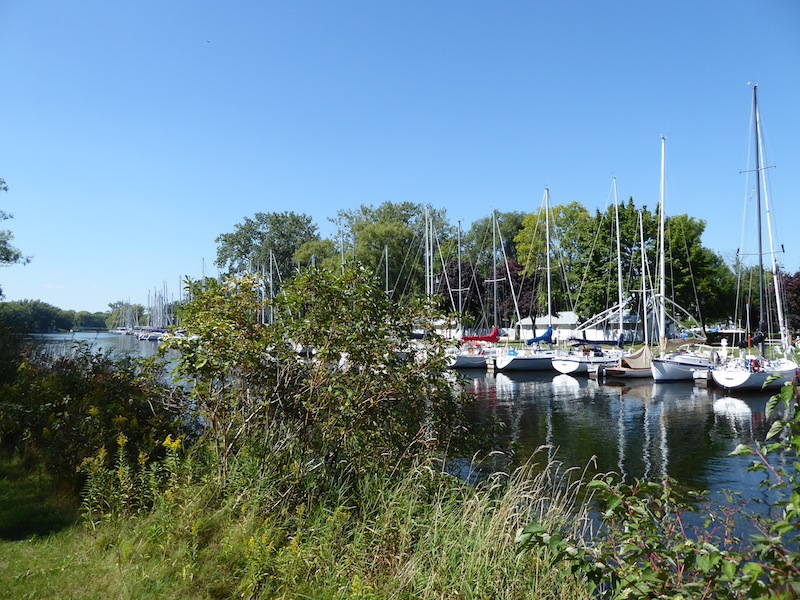
We moved on to Centre Island, where we stopped for an average lunch in an average cafe. As it turned out it was one of several we spotted on our visit… Nearby was Centreville, a children’s amusement park that was closed for the day, and some beautifully planted borders on what was once one of the islands’ busiest streets – a street that summed up the story of the Toronto Islands. For in the latter half of the 20th century the city decided to turn them into parks and move the residents to the mainland, close the hotels and most of the other businesses. The authorities said it would provide a green oasis to replace land lost to the awful Gardiner Expressway.
Despite long-running protests, many people were moved and many buildings demolished to make way for landscaped parks, flower beds, woodland and fountains. But the remaining residents of Ward’s and Algonquin Islands fought on and in 1993 finally won the right to stay. We cycled on to see their homes, passing countless handsome craft moored at the Royal Canadian Yacht Club.
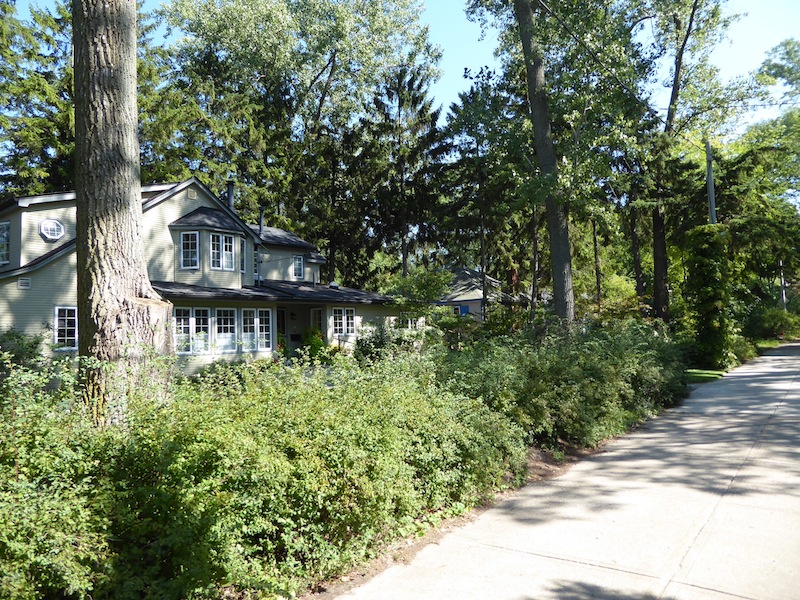
Both Ward’s and Algonquin were green, wooded, peaceful and chilled, the wooden houses in a range of styles and as well tended as most of their gardens. Some were obviously home to the city’s well-to-do, others more obviously owned by hippies and new agers. The views back to the skyscrapers of Downtown from the northern shore of Algonquin were unbeatable.
From Ward’s Island we cycled along the boardwalk and the southern shore, past the more commercial Chelsea Beach and on to the beach at Hanlan’s Point. It was clothing optional (as our hotel concierge had taken much delight in pointing out) and so we stripped off and joined the mostly male and obviously gay crowd in soaking up the sun. We managed to park ourselves next to a bunch of people who clearly knew each other from their regular visits, and who included a woman who’d proudly made a sand sculpture featuring two impressive dicks. It proved a talking point for many passers-by. To the north, planes took off from Billy Bishop and circled around in the deep blue sky. In the bay, a few yachts were moored and their owners chilled out on deck.
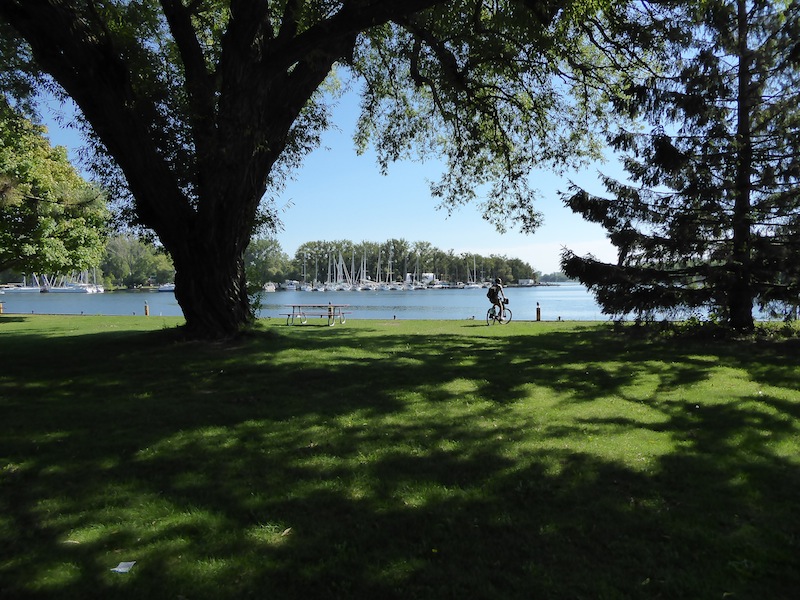
I took a few dips in the lake to cool down, which didn’t take long because the water was bloody freezing.
With the last ferry from Hanlan’s at 4.15pm, we had to make an early escape but again we could enjoy the magnificent views of the city and, in particular, the majestic CN Tower.
On the way home we stopped at a city bar, Earl’s, for a few drinks on the outdoor terrace surrounded by men in suits and women in power frocks. Later we’d return for more after fine dining on great Greek food at Estiatorio VOLOS. And very good it was too.

